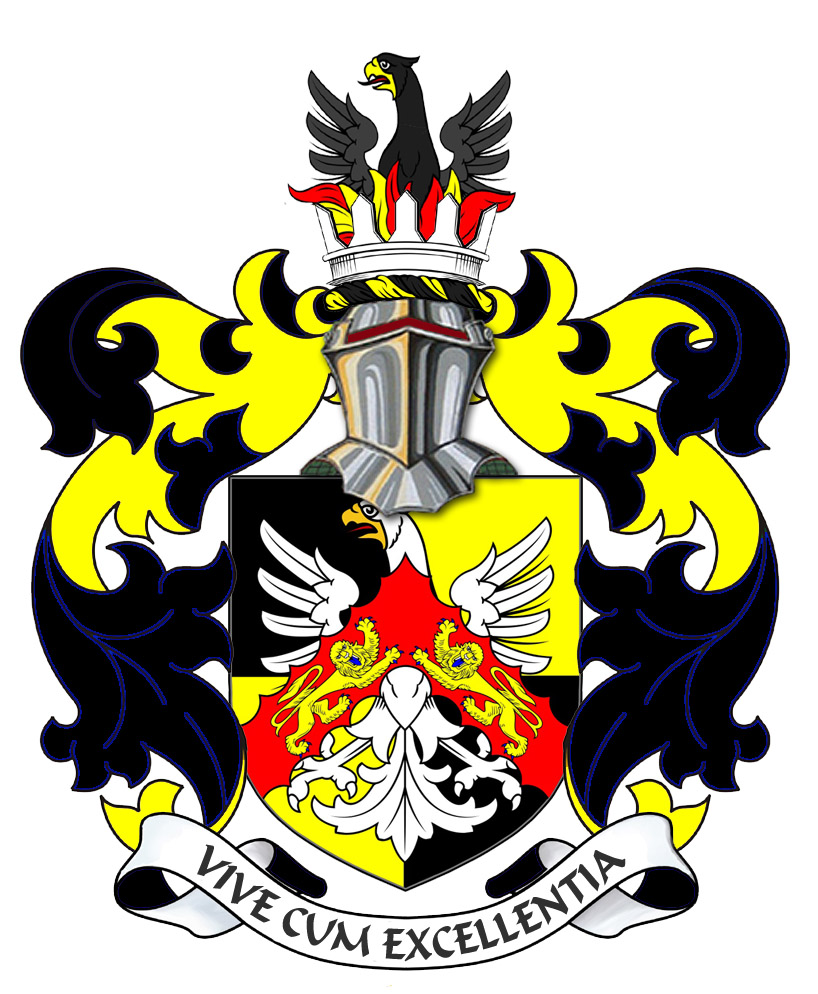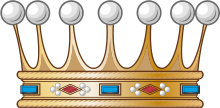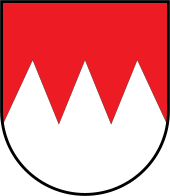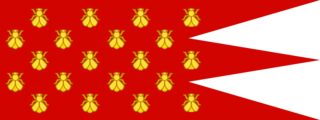


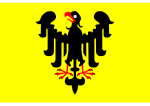
Above is a 1440AD Deed of the private Fief of Blondel and de l'Eperon which is held directly from the crown through court registration and conge/tresieme fees. Seigneurs of Fiefs and Feudal Fiefs
Style of Seigneur - As per the The Feudal Dues (Guernsey) Law, 1980 Style of Seigneur of a fief etc. Section 4. The foregoing provisions of this Law shall be without prejudice –
From the Supplement to the Memorial of the Jersey Reform Committee to the Commissioners apppointed by Her Most Gracious Majesty to enquire into the civil, municipal, and ecclesiastical laws of Jersey and for other purposes, 1859, p. 39. The Jersey upper classes appropriate a Guernsey Order in Council, to ensure they are correctly addressed by the lower orders. ³ In the 17th century in Jersey, 'At the top of the tree were the Squirearchy, the Seigneurs.' Numbers then ranged from 100 to 130, perhaps about 600 including family members. 'They expected to be addressed by the name of their fiefs, Monsieur des Saumarès, Monsieur de Sotel, Monsieur de St Ouen. They spoke of themselves as the Noblesse, for in Jersey as in France, Nobility was considered to begin with the Ecuyer and not as in England with the Baron.' From N.V.L. Rybot, 'Social Life in Jersey in the early 17th century', Bull. Annuel de la Société Jersiaise, 1941 XIV (2), pp. 76 ff. The same applied in Guernsey; Pierre de Beauvoir, for example, was known as 'Monsieur des Granges,' or simply, 'des Granges.' Elie Brevint, Minister of Sark, writing in his Notebook in the first quarter of the 17th century, remarks that 'In Guernsey they give the title of Maître to the Jurats, whoever they are, so they say for example Mre Brehaut, Mre Febvre. In Sark they say honneste homme M. and N. principally when writing.' See: Actes des Etats de l'Ile de Guernesey, Vol. III. Actes des Etats de l'Ile de Jersey, 1524-1700; Société Jersiaise, 1897. Jean Dumaresq was very busy that year: see the Library's Copie d'une proposition faite aux états par Jean Dumaresq, Ésc. Connétable de la paroisse de S. Pierre: et logée au Greffe le 12 Août 1786, touchant le rétablissement des enquêtes dans l'isle de Jersey, en matières civiles, mixtes et criminelles. In 1614, Thomas Le Marchant wished to be called upon to attend Chief Pleas under the title of gentilhomme, 'au rang des gentilhommes,' referring to the preceding case, and appearing to claim right to the title of Gentleman as Seigneur of the fief of Vaugrart.
Seigneurial Courtesy Forms of Address: Examples * Note that because French
is still used in the courts and other formalities, these Norman version of the style is still
used. MonSieur John Doe of Blondel
Lord (seigneur) was not necessarily a title. The owner of a lordship, even a commoner, was its lord. The term "lord" meant "the possessor of a certain kind of property" in the feudal system, a mixture of actual real estate and rights over people (rents and fees could be collected from them, certain obligations could be imposed on them, etc). Someone who was only a seigneur was not titled. All FRENCH lordships disappeared when feudalism was abolished in 1789, but the Norman Crown Dependencies of Guernsey, Jersey, and Sark still maintain their Feudal historical culture, customs and styles even today under the Queen and Crown. Viking Styles, Honors and Titles - In Denmark and Norway , the title of Friherre was of equal rank to that of Baron, which has gradually replaced it. It was instituted on 25 May 1671 with Christian V 's Friherre privileges. Today only a few Danish noble families use the title of Friherre and most of those are based in Sweden, where that version of the title is still more commonly used; a Danish Friherre generally is addressed as "Baron". [10] The wife of a Danish or Norwegian Friherre is titled Friherreinde , and the daughters are formally addressed as Baronesse . [8] Freiherr ( German: [ˈfʁaɪˌhɛɐ̯] ; male, abbreviated as Frhr. ), Freifrau ( [ˈfʁaɪˌfʁaʊ] ; his wife, abbreviated as Frfr. , literally "free lord" or "free lady") [1] and Freiin ( [ˈfʁaɪ.ɪn] ; In France, during the Ancien Régime , French baronies were very much like Scottish ones. Feudal landholders were entitled to style themselves baron if they were nobles; a roturier (commoner ) could only be a S eigneur de la baronnie (lord of the barony). These baronies could be sold freely until 1789 when feudal law was abolished. The title of baron was assumed as a titre de courtoisie by many nobles, whether members of the Nobles of the Robe or cadets of Nobles of the Sword who held no title in their own right. In 1815, King Louis XVIII created a new peerage system based on the British model. Baron-peer was the lowest title, but the heirs to pre-1789 barons could remain barons, as could the elder sons of viscount -peers and younger sons of count -peers. This peerage system was abolished in 1848. Seigneur (English: Lord , German: Herr ), was the name formerly given in France to someone who had been granted a fief by the crown, with all its associated rights over person and property. This form of lordship was called seigneurie , the rights that the seigneur was entitled to were called seigneuriage , and the seigneur himself was the seigneur justicier , because he exercised greater or lesser jurisdiction over his fief. Since the repeal of the feudal system on 4 August 1789 in the wake of the French Revolution , this office has no longer existed and the title has only been used for sovereign princes by their families. In pre-republican Germany all the knightly families of the Holy Roman Empire (sometimes distinguished by the prefix von or zu) eventually were recognised as of baronial rank, although Ritter is the literal translation for "knight", and persons who held that title enjoyed a distinct, but lower, rank in Germany's nobility than barons (Freiherren). The wife of a Freiherr (Baron) is called a Freifrau or sometimes Baronin, his daughter Freiin or sometimes Baroness. Families which had always held this status were called Uradel ('primordial/ancient/original nobility'), and were heraldically entitled to a three pointed coronet. Families which had been ennobled at a definite point in time (Briefadel or "nobility by patent") had seven points on their coronet. These families held their fief in vassalage from a suzerain. What is a Free Lord ? The holder of an allodial (i.e., suzerain-free grant direct from crown to holder) barony was thus called a Free Lord, or Freiherr. Subsequently, sovereigns in Germany conferred the title of Freiherr as a rank in the nobility, without implication of allodial or feudal status.
Seigneur (English: Seigneur; Lord) was the name formerly given in France before the Revolution, and in New France and Canada until 1854, to the individual or the collective entity which owned a seigneurie — a form of land tenure — as a fief, with its associated rights over person and property. A seigneur could be an individual, — male or female (seigneuresse), noble or non noble (roturier) — or a collective entity such a religious community, a monastery, a seminary, a college, a parish.
This form of lordship was calledseigneurie, the rights that theseigneurwas entitled to were calledseigneuriage, and theseigneurhimself was theseigneur justicier, because he exercised greater or lesserjurisdictionover his fief. Since the repeal of thefeudal systemon 4 August 1789 in the wake of theFrench Revolution, this office has no longer existed and the title has only been used forsovereignprinces by their families.
In common speech, the term grandseigneur has survived. Today this usually means an elegant, urbane gentleman. Some even use it in a stricter sense to refer to a man whose manners and way of life reflect his noble ancestry and great wealth. In addition, Le Grand Seigneur had long been the name given by the French to the Ottoman sultan. Notre Seigneur Jésus-Christ is the French equivalent of the English Our Lord Jesus Christ. The word seignorage is also derived from seigneur. The word shares the same provenance as the Italian Signore, Portuguese Senhor and Spanish Señor, which in addition to meaning "Mister" were used to signify a feudal lord. Use in Crown dependenciesThe title is still used in the Bailiwick of Guernsey.In particular, it refers to the Seigneurs of Guernsey and the Seigneur of Sark
The traditional native language of Guernsey is Guernesiais (pronounced ‘JEHR-nehz-y-yay’), also known as Guernsey French or 'patois'. However, in the 11th Century Old Norse was the most widely spoken language in Europe. The region was huge and consisted of all the Nordic countries, settlements in Scotland, Ireland, England Wales, Isle of Man, Normandy, Vinland (America) and Volga (Russia) and some places in-between. As a note, William the Conqueror understood the Norse language, and the names Jersey , Guernsey , and Alderney are as truly Norse names as Orkney and Shetland. Norse was actually spoken in parts of the Contentin in North Western France in places like Bayeaux. Norse was spoken and or affected many words and traditions in feudal guernsey.
Nobility of the Norse Modern aristocratic titlesIn the last 300 years, the titles of baron and count, title of marquis in 1709, the following system is the current in Norway or the Norse Nation.
The class of barons and the class of counts were even internally divided. A count would be a titular count (greve), a feudal count (lensgreve) or a national count (riksgreve). Likewise a baron would be a titular baron (friherre), a feudal baron (lensfriherre) or a national baron (riksfriherre). For example, a lensgreve uses the title greve only.
Brief Description of the Norman Fief of Blondel and Eperons - Est. 1179 Commissioner George Mentz is the Seigneur of the Fief Blondel & Eperons of Normandy which is an 800 year old territory on the Norman Islands. From the great Viking Rollo to the present day of the rule of King Charles, these islands have allowed feudal law and courts on the fiefs and island shores. The Fief Blondel and Eperons and its Seigneur are registered directly with the Royal Courts of the Crown and The Duke of Normandy and King Charles. Much like the Seigneurs of Monaco, the lords of French Andorra, Sovereign Gozo of Malta, the Sovereign Military Order of Malta (SMOM), The Papal Monarch of the Vatican City, and The Lord of Sark, The ancient Fiefs in the Channel islands are recognized by both nobility law and international law. Commissioner Dr. George Mentz was elevated as the 26th Free Lord & Seigneur of Fief of Blondel et L'Epersons) on the island of (Dgèrnésiais - Guernsey French) in Dec. 2017. Mentz also registered the fief direct with the courts using the feudal legal system of Conge and Tresieme which is the official way to transfer a fief from one noble leader or peer to another owner. The Fief of Thom. Blondel is One of the Last Great Private Fiefs in Europe to be privately owned where the lord owns the Beaches, Water, Foreshores and Seasteds including international Waters. In other local cultures, the free-lord Seigneur is known as a Frhr. Friherre in Sweden, a Frhr. Vrijheer in Dutch, and a Frhr. Friherre in Denmark. The Lords of Fief Blondel et Eperons appear to be older than the Seigneurs of Monaco as the Grimaldi family settled in Monaco in 1297 and Fief Blondel is also older than ancient Sheikhdom of Kuwait, Kingdom of Moscovy Russia 1362, Kingdom of Spain 1479, Kingdom of Bohemia, Kingdom of Belgium. Fief Blondel may also be older than the Ottoman Empire, Habsburg Empire, and the Kingdom of Lithuania. French: Le commissaire George Mentz est le seigneur du fief Blondel & Eperons de Normandie, un territoire vieux de 800 ans situé sur les îles normandes. Du grand Viking Rollo jusqu'à l'époque actuelle du règne du roi Charles, ces îles ont permis l'application du droit féodal et des tribunaux sur les fiefs et les côtes des îles. Le fief Blondel et Eperons ainsi que son seigneur sont enregistrés directement auprès des Cours Royales de la Couronne, du Duc de Normandie et du Roi Charles. Tout comme les seigneurs de Monaco, les seigneurs de la France, Andorre, le Souverain Gozo de Malte, l'Ordre Souverain Militaire de Malte (SMOM), le Monarque Papal de la Cité du Vatican et le Seigneur de Sark, les anciens fiefs des îles de la Manche sont reconnus à la fois par le droit de la noblesse et par le droit international. Le commissaire George Mentz a été élevé au rang de 26ème Seigneur Libre et Seigneur du fief de Blondel et L'Epersons) sur l'île de (Dgèrnésiais - français de Guernesey) en décembre 2017. Mentz a également enregistré le fief directement auprès des tribunaux en utilisant le système juridique féodal de Conge et Tresieme, qui est la manière officielle de transférer un fief d'un noble leader ou pair à un autre propriétaire. Le fief de Thom. Blondel est l'un des derniers grands fiefs privés en Europe à être la propriété privée où le seigneur possède les plages, l'eau, les rivages et les estrades maritimes, y compris les eaux internationales. Dans d'autres cultures locales, le seigneur libre Seigneur est connu sous le nom de Frhr. Friherre en Suède, un Frhr. Vrijheer en néerlandais, et un Frhr. Friherre au Danemark. Les seigneurs du fief Blondel et Eperons semblent être plus anciens que les seigneurs de Monaco car la famille Grimaldi s'est installée à Monaco en 1297 et le fief Blondel est également plus ancien que l'ancien émirat du Koweït, le royaume de Moscovy Russie 1362, le royaume d'Espagne 1479, le royaume de Bohème, le royaume de Belgique. Le fief Blondel pourrait également être plus ancien que l'Empire ottoman, l'Empire des Habsbourg et le royaume de Lituanie. German: Kommissar George Mentz ist der Seigneur des Fiefs Blondel & Eperons der Normandie, das ein 800 Jahre altes Territorium auf den Normanneninseln ist. Von dem großen Wikinger Rollo bis zur heutigen Zeit unter der Herrschaft von König Charles haben diese Inseln feudales Recht und Gerichte auf den Lehen und Inselküsten ermöglicht. Das Fief Blondel und Eperons sowie sein Seigneur sind direkt bei den Königlichen Gerichten der Krone, dem Herzog der Normandie und König Charles registriert. Ganz ähnlich wie die Seigneurs von Monaco, die Herren von Frankreich, Andorra, dem Souveränen Gozo von Malta, dem Souveränen Militärorden von Malta (SMOM), dem päpstlichen Monarchen des Vatikanstaats und dem Herrn von Sark werden die alten Lehen auf den Kanalinseln sowohl vom Adelsrecht als auch vom Völkerrecht anerkannt. Kommissar Dr. George Mentz wurde im Dezember 2017 zum 26. Freien Herrn & Seigneur des Fiefs von Blondel et L'Epersons) auf der Insel (Dgèrnésiais - Guernsey French) erhoben. Mentz registrierte das Lehen auch direkt bei den Gerichten unter Verwendung des feudalen Rechtssystems von Conge und Tresieme, das die offizielle Art und Weise ist, ein Lehen von einem adligen Führer oder Peer auf einen anderen Eigentümer zu übertragen. Das Fief von Thom. Blondel ist eines der letzten großen privaten Lehens in Europa, das privat besessen ist, wo der Herr die Strände, das Wasser, die Küsten und die Meeresstädte einschließlich der internationalen Gewässer besitzt. In anderen lokalen Kulturen ist der freie Herr Seigneur als Frhr. Friherre in Schweden, ein Frhr. Vrijheer im Niederländischen und ein Frhr. Friherre in Dänemark bekannt. Die Herren des Fiefs Blondel et Eperons scheinen älter zu sein als die Seigneurs von Monaco, da sich die Familie Grimaldi 1297 in Monaco niederließ und das Fief Blondel auch älter ist als das alte Scheichtum Kuwait, das Königreich Moscovy Russland 1362, das Königreich Spanien 1479, das Königreich Böhmen, das Königreich Belgien. Das Fief Blondel könnte auch älter sein als das Osmanische Reich, das Habsburgerreich und das Königreich Litauen. Italian: Il commissario George Mentz è il signore del Feudo Blondel & Eperons della Normandia, un territorio di 800 anni situato nelle isole normanne. Dal grande vichingo Rollo ai giorni nostri sotto il regno di Re Carlo, queste isole hanno permesso l'applicazione della legge feudale e dei tribunali sui feudi e sulle coste delle isole. Il Feudo Blondel ed Eperons e il suo signore sono registrati direttamente presso i Tribunali Reali della Corona, il Duca di Normandia e Re Carlo. Molto simili ai signori di Monaco, i signori della Francia, Andorra, il Sovrano Gozo di Malta, il Sovrano Militare Ordine di Malta (SMOM), il Monarca Papale della Città del Vaticano e il Signore di Sark, gli antichi Feudi delle isole del Canale sono riconosciuti sia dalla legge nobiliare che dal diritto internazionale. Il commissario Dr. George Mentz è stato elevato al rango di 26° Signore Libero & Signore del Feudo di Blondel et L'Epersons) nell'isola di (Dgèrnésiais - Guernsey French) nel dicembre 2017. Mentz ha anche registrato il feudo direttamente presso i tribunali utilizzando il sistema giuridico feudale di Conge e Tresieme, che è il modo ufficiale per trasferire un feudo da un nobile leader o pari a un altro proprietario. Il Feudo di Thom. Blondel è uno degli ultimi grandi feudi privati in Europa a essere di proprietà privata, dove il signore possiede le spiagge, l'acqua, le rive e le città marittime, comprese le acque internazionali. In altre culture locali, il Signore libero Seigneur è conosciuto come Frhr. Friherre in Svezia, un Frhr. Vrijheer in olandese e un Frhr. Friherre in Danimarca. I Signori del Feudo Blondel et Eperons sembrano essere più antichi dei Signori di Monaco, poiché la famiglia Grimaldi si stabilì a Monaco nel 1297 e il Feudo Blondel è anche più antico dell'antico sceicco del Kuwait, del Regno di Moscovia Russia 1362, del Regno di Spagna 1479, del Regno di Boemia, del Regno del Belgio. Il Feudo Blondel potrebbe anche essere più antico dell'Impero Ottomano, dell'Impero degli Asburgo e del Regno di Lituania. Spanish: El comisionado George Mentz es el Señor del Feudo Blondel & Eperons de Normandía, un territorio de 800 años en las Islas Normandas. Desde el gran vikingo Rollo hasta la actualidad bajo el reinado del Rey Carlos, estas islas han permitido la aplicación de la ley feudal y los tribunales en los feudos y las costas de las islas. El Feudo Blondel y Eperons y su Señor están registrados directamente en los Tribunales Reales de la Corona, el Duque de Normandía y el Rey Carlos. Al igual que los Señores de Mónaco, los señores de Francia, Andorra, el Soberano Gozo de Malta, la Orden Militar Soberana de Malta (SMOM), el Monarca Papal de la Ciudad del Vaticano y el Señor de Sark, los antiguos Feudos de las Islas del Canal son reconocidos tanto por la ley nobiliaria como por el derecho internacional. El comisionado Dr. George Mentz fue elevado al rango de 26º Señor Libre y Señor del Feudo de Blondel et L'Epersons) en la isla de (Dgèrnésiais - Guernsey French) en diciembre de 2017. Mentz también registró el feudo directamente en los tribunales utilizando el sistema legal feudal de Conge y Tresieme, que es la forma oficial de transferir un feudo de un líder noble o par a otro propietario. El Feudo de Thom. Blondel es uno de los últimos grandes feudos privados en Europa en ser de propiedad privada, donde el señor posee las playas, el agua, las costas y las ciudades marítimas, incluidas las aguas internacionales. En otras culturas locales, el Señor libre Señor se conoce como Frhr. Friherre en Suecia, un Frhr. Vrijheer en holandés y un Frhr. Friherre en Dinamarca. Los Señores del Feudo Blondel et Eperons parecen ser más antiguos que los Señores de Mónaco, ya que la familia Grimaldi se estableció en Mónaco en 1297 y el Feudo Blondel también es más antiguo que el antiguo jeque del Kuwait, el Reino de Moscovia Rusia 1362, el Reino de España 1479, el Reino de Bohemia, el Reino de Bélgica. El Feudo Blondel también podría ser más antiguo que el Imperio Otomano, el Imperio de los Habsburgo y el Reino de Lituania. | ||||||||||||||||||||||||||||||||||||
Kingdom of West Francia Lord Paramount Feudal Barons The Seigneur Charter of Liberties Viking Kingdom Extended Continental Shelf Fief Worship Fiefs of the Islands Fief de l'Eperon Order of the Iron Crown Blondel Privy Seal Fief DuQuemin Bouvée Phlipot Pain Bouvée Torquetil Bouvée Bourgeon Channel Island History Feif Court Styles and Dignities Fief Blondel Islands Court of Chief Pleas Seigneurs and Dames Travel Research Order of the Genet Order of the Genet Order of the Star Est. 1022 Order of the White Falcon Territorial Waters Order of Celestines Knights of theThistle of Bourbon A Funny Think Happened On the Way to the Fief Arms Motto Flower Chancellor Hereditements Guernsey Bailiwick of Guernsey - Crown Dependency Papal Bull Norse Normandy Fief Rights Blondel and King Richard Press Carnival Store Portelet Beach Roquaine Bay Neustrasia Columbier Dovecote Fief Blondel Merchandise Fief Blondel Beaches Islands Foreshore Events Fiefs For Sale Sold Fief Coin Viscounts de Contentin Fief Blondel Map Feudal Guernsey Titles The Feudal System Flag & Arms Fief Videos Guernsey Castle Advowson Site Map Disclaimer Livres de perchage Lord Baron Longford Dictionary
Feudal Lord of the Fief Blondel of the Nordic Channel Islands Guernsey Est.
1179
Feudalherr - Fief Blondel von der Nordischen Insel Guernsey Est. 1179
New York Gazette - Magazine of Wall Street -
George Mentz -
George Mentz - Aspen Commission
Counselor George Mentz Esq. - Seigneur Feif BlondelBaron Annaly Baron Moyashel Grants to Delvin About Longford Styles and Dignities The Seigneur Court Barons Fiefs of the Islands Longford Map The Island Lords Market & Fair Fief Worship Channel Island History Fief Blondel Lord Baron Longford Fief Rights Fief Blondel Merchandise Events Blondel and King Richard Fief Coin Feudal Guernsey Titles The Feudal System Flag & Arms Castle Site Map Disclaimer Blondel Myth DictionaryKingdom West Francia Kingdom of the FranksMentz Scholarship Program 101 Million Donation - Order of the Genet Knighthood |
